Cover Story: Coping with the Emotional, Physical, and Mental Effects of a Pandemic
 By Susan Wells Courtney, MSAA Senior Writer
By Susan Wells Courtney, MSAA Senior Writer
Reviewed by Barry A. Hendin, MD
COVID-19 and Other Pandemics
As everyone is painfully aware, we are currently immersed in a worldwide pandemic, known as COVID-19. We began to hear of this coronavirus outbreak in China in late 2019, and within a few months, this serious epidemic devastated several countries abroad and had made its way to the United States. By early March, this outbreak was officially identified as a pandemic, which means that it was spreading across a large geographic area and affecting a significant number of individuals. It is the most serious level of infectious disease outbreaks.
According to the Centers for Disease Control and Prevention (CDC), the world has seen four previous pandemics in recent history, with the worst occurring in 1918. One-third of the world’s population became infected (500 million people), and at least 10% of these individuals died (50 million). Subsequent pandemics occurred in 1957, 1968, and 2009. An estimated one million people died worldwide in each of the 1957 and 1968 pandemics – certainly an enormous number – but only a tiny fraction of those lost in 1918. Less than one-third of one million died in the first year of the 2009 pandemic, and we can surely attribute these significant reductions to advances in scientific research, technology, and medical care, as well as communications through mass media, well-heeded warnings, and urgent preparations as advised by the World Health Organization (WHO).
In addition to the massive issues of having enough medical personnel and critical equipment (such as protective gear, hospital beds, medications, and respirators), the challenges posed by a disease outbreak of this magnitude include the development of diagnostic tests, antibody tests, and most importantly, vaccines and effective treatments, which typically require minimally a year or more of trials to determine effectiveness and safety. COVID-19 has proven to be particularly challenging in how easily it can be transmitted and how quickly it can progress. We also don’t know if someone may develop this disease a second time, or how long one is contagious after his or her symptoms have resolved. Older individuals, those with pre-existing conditions, and people who are immunocompromised, are particularly at risk of experiencing a more advanced illness – but this does not mean that younger and healthier people cannot be equally affected.
We are seeing people from every walk of life affected, with particularly large numbers among those who work in the medical field or as first responders, along with other essential workers. Our hearts go out to these heroes. Additionally, nursing home residents, and even prison inmates, are at a greater risk as well, given health factors and close proximity to one another.
COVID-19 Overview
The coronavirus disease 2019 (COVID-19) is a potentially serious inflammatory disease that impacts the respiratory system. It is part of a large family of coronaviruses common in people and animals. COVID-19 is spread mainly from person-to-person through coughing or sneezing and may spread from contact with surfaces after an infected person has left germs. This virus can be spread by individuals who test positive for the virus, with or without symptoms.
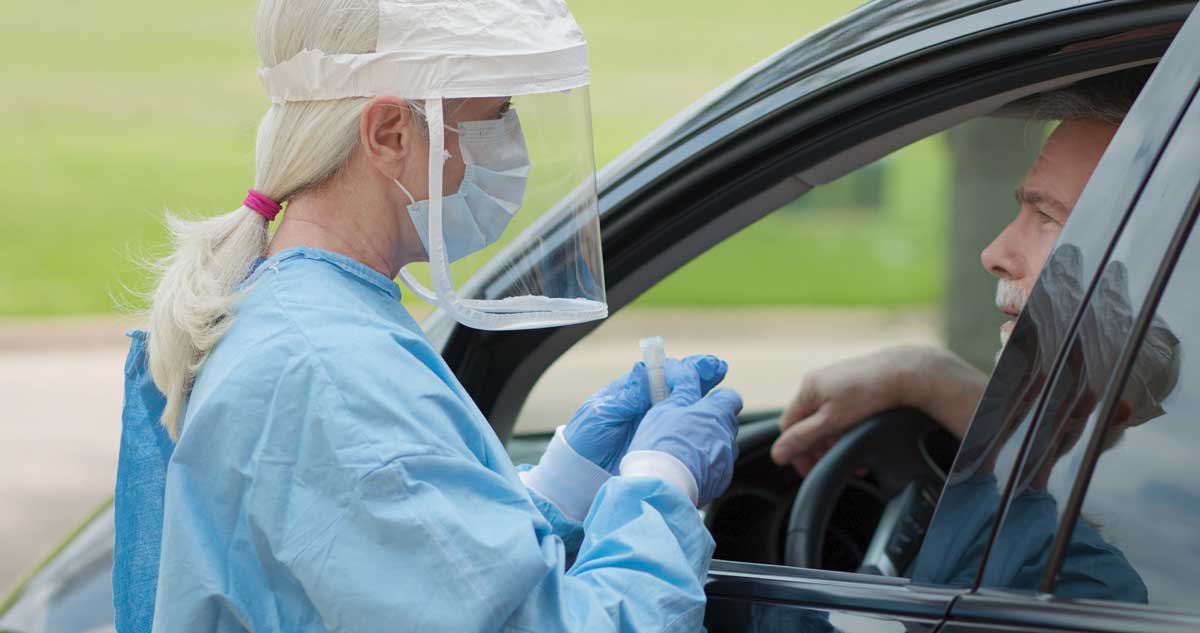 Initial symptoms include fever, cough, and shortness of breath. Other symptoms include headache, malaise, diarrhea, and loss of sense of smell and taste. The majority of individuals who catch the coronavirus will not experience a serious form of the illness and will not need to be hospitalized. If you do experience mild symptoms, isolate yourself from other members of your household and immediately contact your local healthcare professional to determine (1) the severity of your illness and (2) if your residential setting is appropriate for home care. Many healthcare professionals are conducting remote communication (via phone or video-communication options).
Initial symptoms include fever, cough, and shortness of breath. Other symptoms include headache, malaise, diarrhea, and loss of sense of smell and taste. The majority of individuals who catch the coronavirus will not experience a serious form of the illness and will not need to be hospitalized. If you do experience mild symptoms, isolate yourself from other members of your household and immediately contact your local healthcare professional to determine (1) the severity of your illness and (2) if your residential setting is appropriate for home care. Many healthcare professionals are conducting remote communication (via phone or video-communication options).
As noted in our “Ask the Doctor” column, more severe symptoms and poorer outcomes have been associated with increasing age and medical comorbidities, including chronic lung diseases, heart disease, cancer, poorly controlled diabetes, renal (kidney) failure, and smoking. Additionally, people whose immune systems are suppressed may also be at greater risk, which includes individuals who take certain disease-modifying therapies (DMTs) for MS. However, people with MS should not stop taking their DMT, or make any changes to their treatment regimen, without consulting their physician. Please note that having MS does not put you at greater risk for getting COVID-19.
Another consideration for individuals with MS is the fact that an illness, infection, or particularly a fever, can cause a temporary flare-up of symptoms, known as a pseudoexacerbation. If ill with a flu or virus, people with MS and their care partners should be aware of this potential complication. A pseudoexacerbation is a temporary worsening of symptoms without actual myelin inflammation or damage, brought on by other influences. Once the illness, infection, or fever is resolved, the flare-up will usually remit within 24 hours.
At the present time, no therapies for COVID-19 have been approved, but many possible therapies are being investigated while we wait for a vaccination program. The CDC has recommended that all of us use common sense protection such as hand washing, cleaning of our environment, social distancing, face coverings, and isolation in place (when appropriate).
Limiting Exposure Nationwide
In the absence of a vaccine or a cure, the only viable strategy to control a pandemic is to avoid exposure to anyone who may be contagious, with or without symptoms. To accomplish this, much of the nation has had to shut down. Essential services, such as healthcare, law enforcement, transportation, food and necessary supplies, farming, the care of animals, as well as repair businesses, are examples of those that are excluded from this shutdown.
In nearly every state in the United States, those not required for essential services are “sheltering at home,” a previously unfamiliar phrase that is now all too familiar. Sheltering at home has dramatically interfered with virtually every American’s daily activities, from employment and education, to travel, recreation, socializing, and shopping for daily supplies. Some families are finding themselves suddenly without an income, without money in the bank, and forced to sit in long lines for several hours to obtain food for their family.
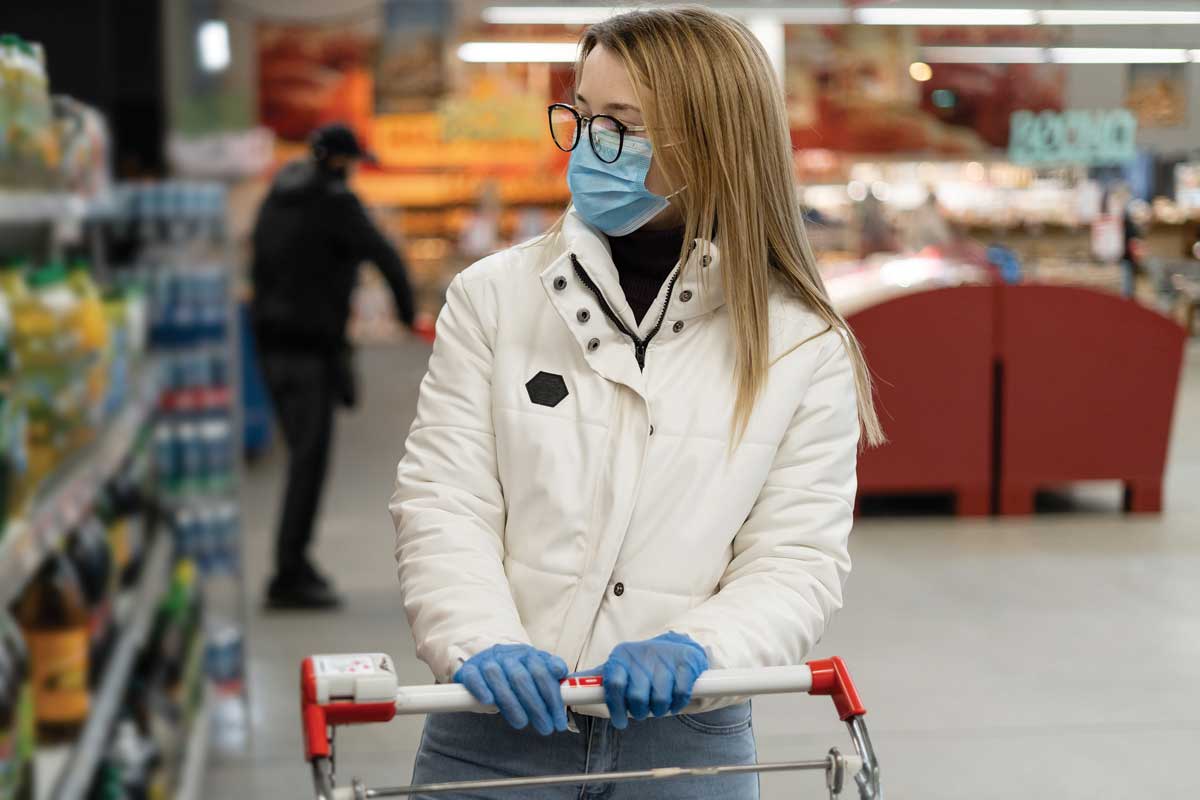 Others are wearing a face covering to visit local stores for food and supplies – and in some cases – finding empty shelves that once held much-needed necessities such as meats, dairy products, soaps, disinfectants, and paper goods. Ordering store items for delivery or pickup is a good option, although many stores are overrun with orders, out of several items, and have limited openings available.
Others are wearing a face covering to visit local stores for food and supplies – and in some cases – finding empty shelves that once held much-needed necessities such as meats, dairy products, soaps, disinfectants, and paper goods. Ordering store items for delivery or pickup is a good option, although many stores are overrun with orders, out of several items, and have limited openings available.
Children are no longer at daycare or in school, and parents or other caregivers are now teachers and activity directors. This can be particularly challenging for individuals with a chronic condition such as MS, who may not have the energy or endurance to look after one or more children in this capacity, or whose symptoms prevent them from participating in such activities at all. And given the risk of spreading disease and the need for social distancing, our relatives, friends, and neighbors are often unable to assist.
These are unprecedented times in our country, and the economic toll alone is staggering. “Restarting” the economy and “reopening” the country are uncharted territories and will certainly be challenging. By sheltering at home and social distancing, thousands, if not millions, of lives are being saved. The importance of following the guidelines of staying at home, not gathering socially, and protecting yourself when going out, are critical to everyone’s future.
Fortunately, at this time when we might be feeling very alone, we are seeing a collective, virtual, coming together of people from across the country and around the world. Famous musicians and singers are performing separately but in unison from their homes – harmonizing over the internet and on TV.
People are taking to social media and posting video clips of how they are personally coping with the sheltering at home directive, from cutting their own hair to performing dance routines to holding signs in their windows. Many are working to raise funds for others… creating protective gear to donate to medical workers and first responders… and offering support to others by letting them know that they are not alone. In the midst of this pandemic, we are seeing a great outpouring of compassion and generosity for one another.
Common Reactions to Disease Outbreaks and Social Isolation
The Substance Abuse and Mental Health Services Administration (SAMHSA) offers a great deal of information about disease outbreaks and other emergencies, including how individuals may respond in terms of emotional, physical, and mental responses to these types of traumatic situations. The current situation is a landmark event, one that has never occurred before in our lifetime, with businesses closing nationwide, with millions of people abruptly out of work, and an entire nation not knowing what the future will hold. Add in social isolation, where people cannot gather with family and friends, a host of new emotions, physical symptoms, and mental issues are possible.
To follow is a list of various common reactions that could potentially develop during an infectious outbreak while sheltering at home, practicing social distancing, and experiencing stress.
EMOTIONAL SYMPTOMS
- Anxiety, worry, and/or fear about the following:
- Your own health and the health of those close to you
- The health and welfare of those in other places and around the world, particularly for those in poorer areas or without medical care
- Whether your employment, income, and benefits – including health insurance – will be affected
- Your ability to get the things you need, from medications to groceries to personal care items
- Whether you are able to provide adequate care for your children or other people in your care (such as an elderly parent or disabled family member)
- Uncertainty about the future
- Frustration over how long you will need to shelter at home and practice social isolation
- Loneliness and boredom
- Emotional extremes, such as anger, short-temperedness, or euphoria
- Irritability and blaming others
- Periods of panic
- Depression, which may include feelings of hopelessness
- Overwhelming sadness
- Inability to enjoy activities
- Feelings of guilt
- Wanting to be alone
- Not caring
- Some individuals may experience symptoms of post-traumatic stress disorder (PTSD); these include:
- Intrusive distressing memories
- Flashbacks, i.e., reliving traumatic events
- Nightmares
- Changes in thoughts and mood
- Being easily startled
PHYSICAL SYMPTOMS
- Low energy levels
- Sleeping too much or not enough
- Changes in appetite – either overeating or loss of appetite
- Crying often
- Stomachaches
- Skin rashes
- Headaches or body pain
- Sweating or chills
- Tremors (shaking) or muscle twitches
- Being easily startled
- Worsening of chronic health problems
MENTAL SYMPTOMS
- Not listening or communicating well
- Having trouble remembering
- Confusion
- Difficulty concentrating and making decisions
- Drinking too much alcohol, starting or increasing tobacco use, and/or taking illegal drugs
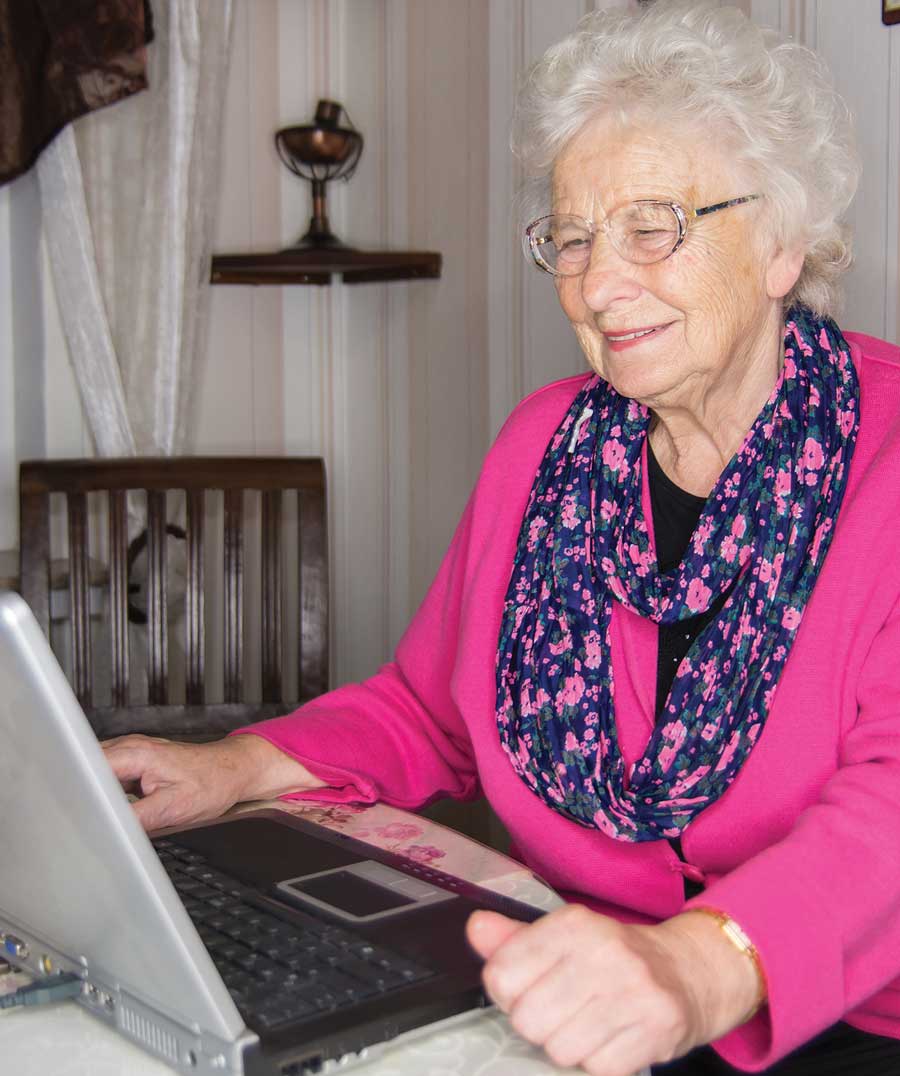 Another issue that must be addressed during a pandemic with social isolation is the fact that we can’t be with loved ones who may be elderly or ill. Most nursing homes and hospitals forbid any visitors. However, we need to be thankful for the advances in communications. For those with devices such as smartphones and tablets, options such as FaceTime, Skype, and Zoom allow users to visit virtually with their loved ones. Whenever possible, visiting virtually and seeing another’s face and expressions, while hearing his or her voice, can be of great comfort, helping to reduce worry and guilt.
Another issue that must be addressed during a pandemic with social isolation is the fact that we can’t be with loved ones who may be elderly or ill. Most nursing homes and hospitals forbid any visitors. However, we need to be thankful for the advances in communications. For those with devices such as smartphones and tablets, options such as FaceTime, Skype, and Zoom allow users to visit virtually with their loved ones. Whenever possible, visiting virtually and seeing another’s face and expressions, while hearing his or her voice, can be of great comfort, helping to reduce worry and guilt.
“Coping with Coronavirus: Managing Stress, Fear, and Anxiety” was a Director’s Message from the NIH National Institute of Mental Health (NIMH), published on March 16, 2020. Written by NIMH Director Joshua A. Gordon, MD, PhD, this writing makes an important point about those who struggle with mental illness.
In his message, Dr. Gordon states, “These are confusing, stressful times for all of us. As the coronavirus pandemic affects numerous facets of our society, it also impacts each person in different ways… Feelings of anxiety and uncertainty are completely normal during times like this.
“Now imagine you are facing this uncertainty and have a mental illness. How much more challenging must it be to navigate this uncertainty? While we all are concerned about the future, for those with anxiety disorders, worry may be all-consuming. For those with schizophrenia, the concern that people are infectious may contribute to paranoia. And for those with depression, lack of social engagement and disruption in routines could increase symptoms.
“For those with mental illnesses, be sure to continue your treatment regimens. Consider developing a plan for telehealth sessions with your provider if you (or your provider) are quarantined or must avoid exposures to the public for any reason. And, reach out to friends and family for support, virtually if necessary.”
See Also: The Impact of the Coronavirus on the MS Community
IMPORTANT NOTES FROM SAMHSA
- If you are feeling overwhelmed with emotions such as sadness, depression, anxiety, or feel like you want to harm yourself or someone else, call 911 or the National Suicide Prevention Lifeline at (800) 273-TALK (8255).
- If you feel lonely or need support, you may call SAMHSA’s free 24-hour Disaster Distress Helpline at (800) 985-5990.
- If you need to connect with someone because of an ongoing alcohol or drug problem, consider calling your local Alcoholics Anonymous or Narcotics Anonymous offices.
- MSAA also provides assistance to those in need through our toll-free Helpline at (800) 532-7667, extension 154, Monday through Friday, between the special extended hours of 8:30 AM to 8:00 PM Eastern Time.
Strategies to Cope with Reactions to Disease Outbreaks and Social Isolation
As noted earlier, these are unprecedented times. Most of us have never been under lockdown or in social isolation for even a day or two, let alone for an extended period of time. Many of us will experience one or more of the emotional, physical, or mental symptoms noted in the previous section. The CDC and SAMHSA, as well as several other mental-health organizations, provide strategies for coping with the responses we can experience during a pandemic or other national emergency.
To follow is a list of things you can do to help minimize the negative feelings or symptoms you may be experiencing as a result of the current pandemic. These also apply to any emergency situation where sheltering at home and social isolation are required.
Determine to what degree you and your family are actually at risk. National and local TV network news, internet articles, posts on social media, and various other news reports can convey mixed messages and possibly distort your perceptions of how much risk is posed to you and your family.
 Look to reliable sources to get your news. Much of the information posted online or on social media can be subjective versus objective, and may reflect personal opinions. The same is true for individuals passing along information, which can sometimes serve to needlessly cause additional alarm. News reports on network TV, and their corresponding radio broadcasts and websites, as well as non-biased news outlets, typically provide the most accurate information available, although none are foolproof. In addition to your state’s website, SAMHSA lists the two following sources for reliable outbreak-related information:
Look to reliable sources to get your news. Much of the information posted online or on social media can be subjective versus objective, and may reflect personal opinions. The same is true for individuals passing along information, which can sometimes serve to needlessly cause additional alarm. News reports on network TV, and their corresponding radio broadcasts and websites, as well as non-biased news outlets, typically provide the most accurate information available, although none are foolproof. In addition to your state’s website, SAMHSA lists the two following sources for reliable outbreak-related information:
Centers for Disease Control and Prevention (CDC): (800) CDC-INFO or (800) 232-4636
World Health Organization (WHO): (202) 974-3000
Do not watch the news constantly. Select certain times, maybe twice each day to keep up with developments, but do not watch news reports 24/7. This only serves to increase anxiety and worry. Please note that children can be especially affected by these news reports.
Connect with others while social distancing. Connecting with friends and family helps to reduce anxiety, depression, loneliness, and boredom. With social distancing in place, you will need to connect via phone, text, email, or social media. Face-to-face communication is even better, and this may be done with a smart device or computer through programs such as FaceTime, Skype, and Zoom.
Join or stay active in an online community. One option is to join My MSAA Community, MSAA’s free peer-to-peer online forum for individuals with MS, their families, and their care partners to share information and their experiences with multiple sclerosis. This friendly, supportive, and safe online community is an ideal platform for members to exchange thoughts and concerns.
Express how you feel to friends and family. Simply letting others know what you are experiencing emotionally can help you to feel less burdened. Often friends and family members are also experiencing these same feelings, and discussing your concerns and worries can help to keep things in perspective.
Strive to keep a positive attitude and maintain a sense of hope for the future. Although this may be difficult, thinking positive thoughts and focusing on positive images for the future can help to combat anxiety, depression, and overwhelming sadness. If helpful, keep a journal to note what you are thankful for, happy memories, and times when things are going well.
Practice relaxation techniques. Relaxing the body can greatly help to reduce the effects of emotional, physical, or mental stress. Among others, strategies include taking deep breaths, stretching, yoga, meditation, and prayer. Listen to calming music.
Participate in activities that you enjoy. Take up or return to a fun hobby – such as painting, writing, crafts, or gardening. Play a game online or with a family member. Without going overboard, eat foods that you enjoy. Spend time with your pet. Read a book or watch a comedy. To view and learn about inspiring works of art from the MS community, please visit MSAA’s Art Showcase.
Take on a new project or accomplish an old task. In an article from AARP, they suggest to “get stuff done” as a way to divert your attention and reduce anxiety. Maybe you have a closet to clean out, a garage to organize, or photos to arrange in an album. Whether you explore a new hobby or tackle a chore you’ve had waiting for years, accomplishing such goals can be very rewarding.
Find ways to laugh. In this same article from AARP, they explain that humor is “a wonderful coping mechanism in times of crisis.” They suggest watching comedy movies or TV sitcoms; listening to recordings of your favorite comedians will also encourage you to smile or laugh. Contacting a friend who always cheers you up is another great option as well.
 Exercise at a comfortable level, as advised by your doctor. According to Healthline, exercise can improve your mood while decreasing depression, anxiety, and stress. It also promotes overall health and better sleep, reduces weight, and increases energy. Exercise can help reduce the risk of chronic illnesses, such as diabetes and heart disease, while improving brain function, among other benefits.
Exercise at a comfortable level, as advised by your doctor. According to Healthline, exercise can improve your mood while decreasing depression, anxiety, and stress. It also promotes overall health and better sleep, reduces weight, and increases energy. Exercise can help reduce the risk of chronic illnesses, such as diabetes and heart disease, while improving brain function, among other benefits.
Take breaks between physically or mentally demanding activities. If tackling challenging activities, such as attempting a big cleaning project or helping your 7th grader with math homework, take a break before becoming fatigued and switch to a more relaxing activity. Such an activity could be sitting on your porch, taking a leisurely walk outside while social distancing, reading, or just watching a fun show on TV. Whatever you choose, make sure it is something you enjoy, so when you return to your more demanding activities, you can take a fresh approach and feel recharged.
Work to stay physically healthy. In addition to using strategies to keep emotionally well, making sure that you are eating right, getting enough sleep, and exercising (as mentioned earlier), are all vitally important to your overall physical health. Drinking plenty of water is important, as well as limiting the amount of caffeine and alcohol you consume, not smoking, and never taking illegal drugs. Lastly, for individuals with MS, taking your medications as directed by your doctor is crucial to your long-term health and with controlling disease activity.
Schedule a remote appointment with your doctor if concerned about your health. If you are having any new symptoms or an increase in existing symptoms, contacting your doctor is important. This serves to not only ensure that you are caring for yourself correctly (particularly if you need a change in medication to address a symptom), but can also help to ease anxiety. Individuals may often connect with their physician via a phone call, or ideally, face-to-face (remotely) via FaceTime, Skype, and Zoom.
See Also: Additional Wellness Information
How Children Respond to an Infectious Disease Outbreak
 The Substance Abuse and Mental Health Services Administration (SAMHSA) offers a very helpful tip sheet for caregivers, parents, and teachers in regard to talking to children during an infectious disease outbreak. They explain that children react differently to anxiety and stress than adults, and while some children react immediately, others may not show signs of distress until a much later time. Individuals caring for a child may not always know when that child is in need of help.
The Substance Abuse and Mental Health Services Administration (SAMHSA) offers a very helpful tip sheet for caregivers, parents, and teachers in regard to talking to children during an infectious disease outbreak. They explain that children react differently to anxiety and stress than adults, and while some children react immediately, others may not show signs of distress until a much later time. Individuals caring for a child may not always know when that child is in need of help.
Obviously, children of different ages will react differently to the outbreak and understand the situation on different levels. To follow is a brief overview of how children’s behavior and emotions may change according to their age group.
Ages up to 5 years:
Younger children will not understand what is happening, but they can sense when their parents are worried. Older children in this age group may be able to understand what a disease outbreak is and can be very upset about such news. In response to stress and anxiety in either age group, children may have unexplained aches and pains, their eating and sleeping patterns may change, they may become more fearful and clingy, and they may possibly go back to thumb sucking or wetting the bed at night. Additional symptoms might include looking for more attention, crying for no reason, acting aggressively toward others or withdrawing socially, having difficulties with speech, and misbehaving by not cooperating at home.
Ages 6 to 10 years:
At this age, children will look to their parents for more attention, they may act out by not doing their schoolwork or chores, and some may feel helpless or guilty over the outbreak that is affecting so many people. Children in this age group may become fearful and also have trouble paying attention. They may become aggressive for no reason and may start acting younger than their age.
Ages 11 to 19 years:
Regardless of an infectious disease outbreak or other emergency, pre-teens and teenagers are going through many emotional and physical changes as they develop and approach adulthood. This can make coping with a pandemic and social isolation much more difficult. Hearing the news can be very upsetting for them, causing anxiety as well as unexplained aches and pains. They may not want to talk about how they feel and say that they are fine, or they may act out by starting arguments, resisting authority, of possibly turning to alcohol or drugs.
Managing Children’s Responses
According to SAMHSA, “With the right support from the adults around them, children and youth can manage their stress in response to infectious disease outbreaks and take steps to keep themselves emotionally and physically healthy. The most important ways to help are to make sure children feel connected, cared about, and loved.”
SAMSHA offers the following tips for talking to children:
- Pay attention and be a good listener
- Allow them to ask questions
- Encourage positive activities
- Model self-care by setting routines, eating healthy meals, getting enough sleep, exercising, and taking deep breaths to handle stress
- DO NOT pressure your child to talk about his or her feelings if not ready to do so
- Try to spend more time with your children while also being mindful of their privacy
Younger children may express their emotions in many ways, including verbally as well as through writing, drawing pictures, and playing. Parents need to let children know that it is okay for them to feel sadness, anxiety, or to be upset. Sometimes children will cry as a way to relieve their stress. Getting down to talk to them at eye level in a calm and comforting voice can help them to feel more secure.
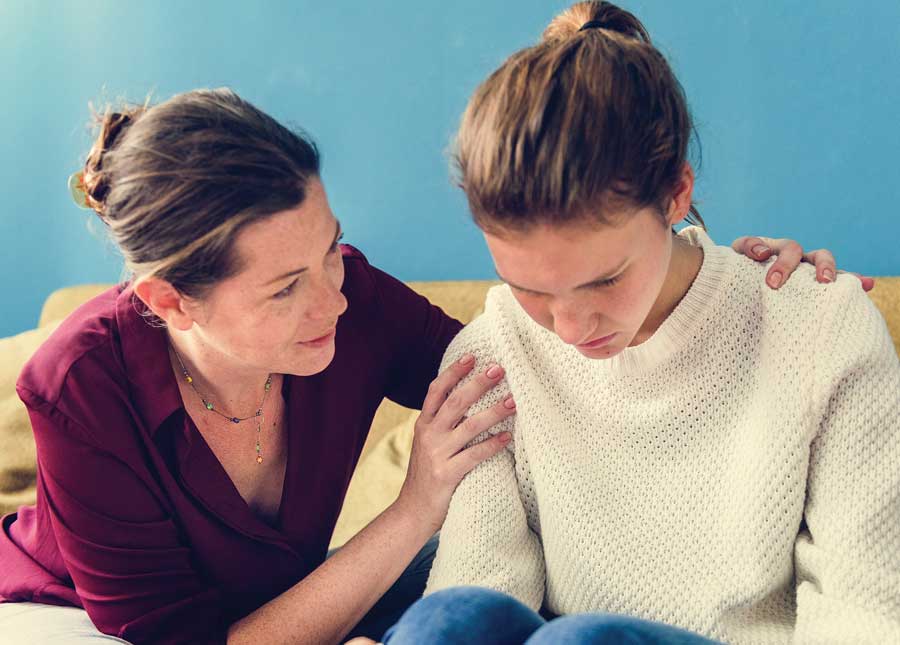 With older children, you may want to watch the news with them and answer any questions they may have – but limit their time spent on watching the news and discussing the outbreak. Older children may also be encouraged to express their feelings through writing or art. Seeing how some people may act heroically and how others are taking part in helping is a positive aspect of an outbreak. Family members of almost any age may be able to better cope with their feelings if they are able to help, possibly by volunteering at home to do something like sewing face masks to donate to essential workers or raising money for various causes resulting from the outbreak.
With older children, you may want to watch the news with them and answer any questions they may have – but limit their time spent on watching the news and discussing the outbreak. Older children may also be encouraged to express their feelings through writing or art. Seeing how some people may act heroically and how others are taking part in helping is a positive aspect of an outbreak. Family members of almost any age may be able to better cope with their feelings if they are able to help, possibly by volunteering at home to do something like sewing face masks to donate to essential workers or raising money for various causes resulting from the outbreak.
The Centers for Disease Control and Prevention (CDC) offers the following note in regard to children with special needs. “Children who need continuous use of a breathing machine or are confined to a wheelchair or bed, may have stronger reactions to a threatened or actual disaster. They might have more intense distress, worry or anger than children without special needs because they have less control over day-to-day well-being than other people. The same is true for children with other physical, emotional, or intellectual limitations. Children with special needs may need extra words of reassurance, more explanations about the event, and more comfort and other positive physical contact such as hugs from loved ones.”
Closing Notes
As this article explains, the COVID-19 pandemic, along with its effects on people’s lives, is complicated, life-changing, and widespread. For those who know someone who has faced this disease, or worse, succumbed to the illness, please know that our heartfelt thoughts are with you. For the fortunate majority who are able to avoid contracting this terrible illness, or who have thankfully recovered, other challenges still remain. These might include: changes in employment and income; difficulties in obtaining food, supplies, and medications; the closing of schools and businesses while sheltering at home; and other issues… all of which can be significant and overwhelming. We hope that this article has been of help to anyone who is having trouble coping with his or her specific situation.
Please be sure to take advantage of some of the strategies noted to help reduce your anxiety and improve your health. Take time to understand the emotions that your children may be experiencing and try to help them feel safe and protected. If you are in need of more information or assistance, please be sure to explore the many resources listed in the next section. If you are in crisis or in need of immediate help, call 9-1-1 or one of the hotlines listed at the start of the next section.
Despite all of the hardships during this difficult time, we have seen some very positive occurrences as well. These include remarkable acts of heroism among hospital workers and first responders; large numbers of retired medical professionals bravely volunteering their time at hospitals; an outpouring of generosity and charitable work; as well as a united coming-together among community members and public figures, all volunteering their time and talents to let Americans know that they are not alone.
 Additionally, many family members are developing new bonds between one another, finding themselves sheltering at home together around the clock. Younger children might be experiencing a different environment at home, with no one leaving for work or rushing to an appointment. Teens and adolescents might even find themselves participating more in family activities. And some adults might finally have the time to tackle those jobs around the house that have been pushed aside for years.
Additionally, many family members are developing new bonds between one another, finding themselves sheltering at home together around the clock. Younger children might be experiencing a different environment at home, with no one leaving for work or rushing to an appointment. Teens and adolescents might even find themselves participating more in family activities. And some adults might finally have the time to tackle those jobs around the house that have been pushed aside for years.
However you spend your days, we hope that you are able to stay safe and healthy – emotionally, physically, and mentally. We hope that life will return to “normal” in the very near future, and that this pandemic will soon be behind us all. In the meantime, please do not hesitate to seek assistance through one of the resources listed in the next section. And as always, if you are in need of support, information, or additional resources, please contact MSAA’s Helpline at (800) 532-7667, extension 154; current hours are Monday through Friday, from 8:30 AM to 8:00 PM, Eastern Time.
Do you need help with food today?
Feeding America: feedingamerica.org
According to their website, “The Feeding America network of 200 food banks and 60,000 food pantries and meal programs serve virtually every community in all 50 states, Washington, D.C. and Puerto Rico. Food is free without any expectation of donation or repayment. Food banks and their agencies are dedicated to providing comfortable and confidential services, and visitors should expect a brief intake or check-in process.
“Your safety remains a top priority for the Feeding America network. As COVID-19 impacts our nation, many food banks, food pantries, and meal programs are making changes to ensure the safety of visitors and the food they serve. A variety of low or no contact options are now available in many areas, including seniors-only hours, drive-through pantries, expanded home delivery services, and more.
“Search by zip code or state using the food bank locator, and contact the food bank that serves your area. They will be able to give you information on the free pantries and programs nearest you.”
Resources
Helplines and Assistance
National Suicide Prevention Lifeline
English: (800) 273-TALK (8255)
Español: (888) 628-9454
TTY: (800) 799-4TTY (4889)
https://www.suicidepreventionlifeline.org
https://suicidepreventionlifeline.org/help-yourself/enespanol (español)
Substance Abuse and Mental Health Services Administration (SAMHSA) Disaster Distress Helpline
(800) 985-5990
The Disaster Distress Helpline is a 24/7, free resource providing immediate counseling to anyone in need of help coping with the mental or emotional effects caused by developments related to the pandemic.
SAMHSA National Helpline
(800) 662-HELP
(24/7/365 Treatment Referral Information Service in English and español)
Website: https://www.samhsa.gov/find-help/national-helpline
National Domestic Violence Hotline
https://www.thehotline.org/
(800) 799-7233
TTY (800) 787-3224
MSAA provides assistance to members of the MS community through our toll-free Helpline at (800) 532-7667, ext.154, Monday through Friday, between the special extended hours of 8:30 AM to 8:00 PM Eastern Time.
Resources for Children’s Welfare
Child Welfare Information Gateway
(800) 4-A-CHILD or (800) 422–4453
https://www.childwelfare.gov
National Parent Helpline®
(855) 4-A-PARENT or (855) 427-2736
http://www.nationalparenthelpline.org/
Administration for Children and Families
Website: https://www.acf.hhs.gov
National Child Traumatic Stress Network
Website: https://www.nctsn.org
First Responders Children’s Foundation
Website: https://1strcf.org/
According to their website, “First Responders Children’s Foundation provides financial support to both children who have lost a parent in the line of duty as well as families enduring significant financial hardships due to tragic circumstances. First Responders Children’s Foundation also supports, promotes, and facilitates educational activities and programs created and operated by law enforcement and firefighting organizations whose purpose is to benefit children or the community at large.”
Resources for Additional Information on COVID-19 and Infectious Outbreaks
Individuals may also refer to their state information online.
World Health Organization (WHO)
(202) 974-3000
Centers for Disease Control and Prevention (CDC)
(800) CDC-INFO or (800) 232-4636
Readers may find the following information from the CDC particularly helpful:
- Stress and Coping
- Taking Care of Your Emotional Health
- Helping Children Cope with Emergencies
- Talking with Children about Coronavirus Disease 2019
- Emergency Responders: Tips for taking care of yourself
Substance Abuse and Mental Health Services Administration (SAMHSA)
(877) SAMHSA-7 or (877) 726-4727
Email: info@samhsa.hhs.gov
Readers may find the following publications from SAMHSA particularly helpful:
- Taking Care of Your Behavioral Health During an Infectious Disease Outbreak
- Coping With Stress During Infectious Disease Outbreaks
- Talking With Children: Tips for Caregivers, Parents, and Teachers During Infectious Disease Outbreaks
- How To Cope With Sheltering in Place
- Tips for Disaster Responders: Understanding Compassion Fatigue
AARP provides the following informative articles on coping with COVID-19:
- Ianzito C, “Seven Ways to Cope With Anxiety During the Coronavirus Outbreak: Uncertainty and fear are major triggers. Here’s how to cope,” AARP, March 16, 2020.
- Nania R, “Coronavirus and Older Adults: Your Questions Answered: A CDC official explains why more risk comes with age from COVID-19,” AARP, updated March 27, 2020
- Nania R, “This Is What a Coronavirus Infection Feels Like: A doctor overseeing quarantined patients details COVID-19’s symptoms,” AARP, updated March 19, 2020.
- Schoch D., “Families Worry About Loved Ones in Nursing Homes, Assisted Living: Officials continue to bar guests to protect vulnerable residents from coronavirus,” AARP, updated March 26, 2020
Children’s Books on COVID-19 Available for Free Online
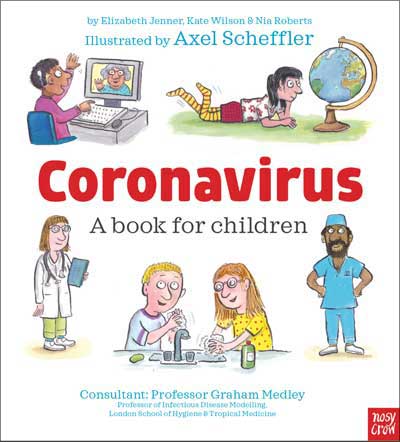 Coronavirus: A Book for Children
Coronavirus: A Book for Children
Illustrated by Axel Scheffler
Written by Elizabeth Jenner, Kate Wilson & Nia Roberts
Published by Nosy Crow
The publisher explains, “Nosy Crow is an award-winning, small, independent children’s book publisher. We made this free digital book because we felt that children and parents might find it useful. We publish lots of different kinds of books for children aged 0-12.”
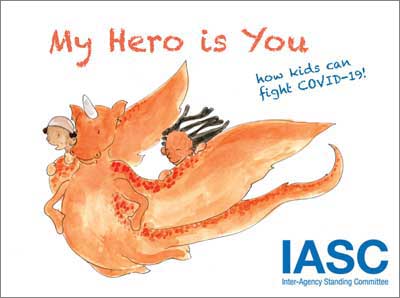 My Hero is You – How kids can fight COVID-19!
My Hero is You – How kids can fight COVID-19!
According to its website, the World Health Organization has partnered with more than 50 humanitarian organizations to release a children’s storybook to help them understand and cope with all the changes and fears they’re enduring due to the COVID-19 pandemic.
The free book, available in downloadable and audio forms, is called My Hero is You, How kids can fight COVID-19! According to a press release from WHO, the book “explains how children can protect themselves, their families and friends from coronavirus and how to manage difficult emotions when confronted with a new and rapidly changing reality.”
References
Brabaw K, “Epidemic vs. Pandemic: What Exactly Is the Difference?” Health, updated March 13, 2020.
Gordon JA, “Coping with Coronavirus: Managing Stress, Fear, and Anxiety,” a Director’s Message from the NIH National Institute of Mental Health (NIMH), March 16, 2020.
Ianzito C, “Seven Ways to Cope With Anxiety During the Coronavirus Outbreak: Uncertainty and fear are major triggers. Here’s how to cope,” AARP, March 16, 2020.
Jordan D, Tumpey T, Jester B, “The Deadliest Flu: The Complete Story of the Discovery and Reconstruction of the 1918 Pandemic Virus,” Centers for Disease Control and Prevention, reviewed December 17, 2019.
Semeco A, “The Top 10 Benefits of Regular Exercise,” Healthline, February 10, 2017.
Sharp J, “Coping with coronavirus anxiety,” a Harvard Health Blog post for Harvard Medical School, Harvard Health Publishing, published March 12, 2020.
Website information from the Centers for Disease Control and Prevention (CDC):
- Stress and Coping
- Taking Care of Your Emotional Health
- Helping Children Cope with Emergencies
- Talking with Children about Coronavirus Disease 2019
Publications from the Substance Abuse and Mental Health Services Administration (SAMHSA):
